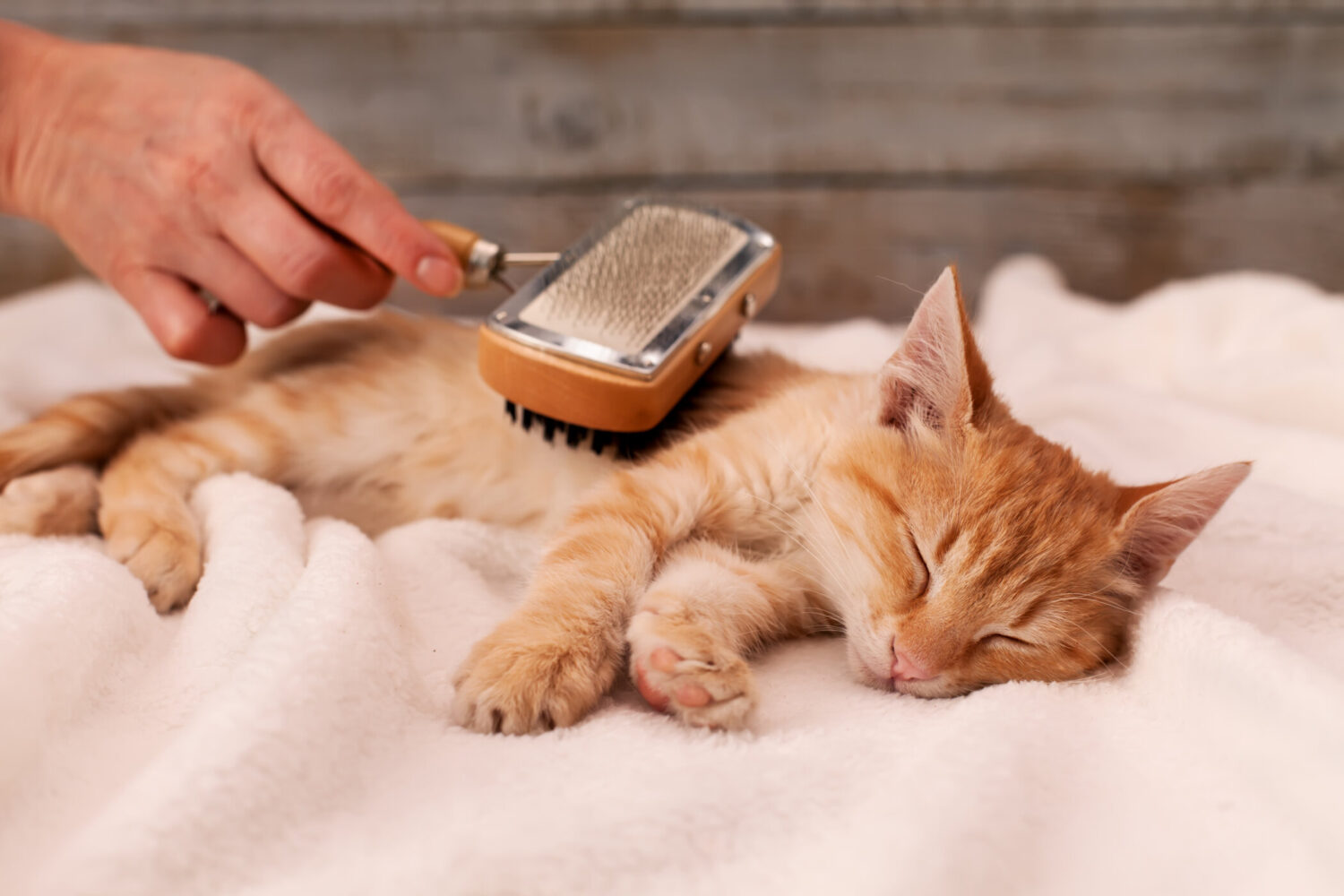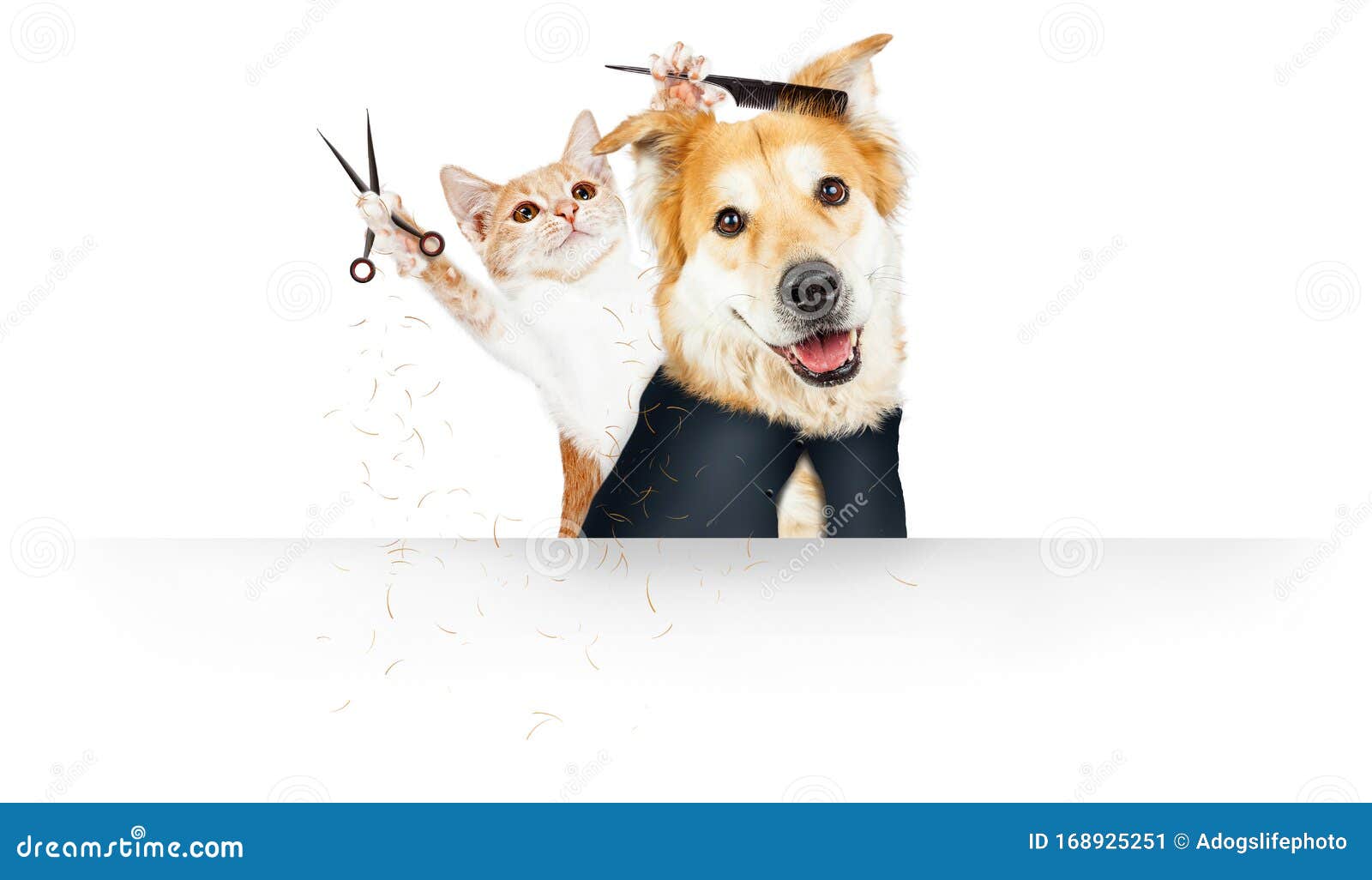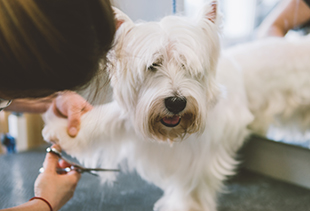Funny cat grooming dog web banner stock image
Table of Contents
Table of Contents
As pet owners, we want our furry companions to look and feel their best. Grooming is an essential part of keeping our dogs and cats healthy and happy. But what do we need to know about dog and cat grooming? In this article, we’ll explore the benefits of grooming, common pain points, and tips for keeping your pet looking and feeling their best.
Pain Points of Dog and Cat Grooming
Grooming can be a stressful experience for some pets. They may not enjoy being handled or may be fearful of the grooming tools. Additionally, some pets may have sensitive skin or be prone to matting, which can make the grooming process uncomfortable or painful.
Benefits of Dog and Cat Grooming
Regular grooming has numerous benefits for both cats and dogs. It can help to prevent matting, remove dead hair, and promote healthy skin and coat. Grooming also provides an opportunity for pet owners to check for any lumps, bumps, or skin irritations that may need attention.
Tips for Dog and Cat Grooming
To make the grooming process more comfortable for your pet, start with short sessions and use treats and positive reinforcement to help them relax. Use appropriate grooming tools, such as a brush or comb tailored to your pet’s coat type. Consider seeking professional grooming services if your pet requires more specialized care.
Dog and Cat Grooming Tools
There are a variety of grooming tools available for both cats and dogs. Some popular options include brushes, combs, nail clippers, and shampoos. When selecting grooming tools, it’s important to consider your pet’s coat type and any specific needs they may have. For example, a long-haired cat may require a different type of brush than a short-haired dog.
Personally, I have found that regular grooming helps to strengthen the bond between myself and my pets. It’s an opportunity for us to spend time together and for me to show them love and care.
Grooming Techniques for Cats and Dogs
Cats and dogs have different grooming needs, and it’s important to tailor your grooming routine accordingly. For example, cats are generally self-groomers, so they may not require frequent bathing or brushing. Dogs, on the other hand, may require more regular grooming to prevent matting or to control shedding.
Grooming for Different Coat Types
When grooming your pet, consider their coat type. Dogs with thick, double coats may require more frequent brushing to prevent matting, while dogs with short, single coats may require less frequent grooming. Cats with long hair may require daily brushing to prevent matting, while cats with short hair may only require weekly brushing.
Grooming for Specific Breeds
Some breeds may have specific grooming needs. For example, poodles may require regular haircuts to maintain their curly coat, while bulldogs may require regular cleaning and wrinkle care to prevent skin irritation.
Question and Answer Section
Q: How often should I groom my cat or dog?
A: The frequency of grooming will depend on your pet’s coat type and specific needs. Generally, dogs and cats should be groomed at least once a month, although some pets may require more frequent grooming.
Q: Can I groom my pet at home or should I seek professional grooming services?
A: This will depend on your pet’s specific needs and your level of comfort with grooming. If you’re unsure, consider seeking professional grooming services, especially if your pet has a difficult-to-manage coat or requires specialized care.
Q: Are there any grooming tools I should avoid using on my pet?
A: It’s important to use appropriate grooming tools to avoid causing discomfort or injury to your pet. Avoid using tools that are too harsh, such as slicker brushes or combs with sharp teeth. Additionally, always use caution when using scissors or clippers, and consider seeking professional help if you’re unsure.
Q: What should I do if my pet becomes stressed during the grooming process?
A: If your pet becomes stressed or agitated during grooming, it’s important to take a break and allow them time to calm down. Consider using calming techniques, such as petting or talking to them in a soothing voice. If your pet is consistently stressed during grooming, consider seeking professional help or trying a different grooming approach.
Conclusion of Dog and Cat Grooming
Grooming is an important part of keeping our pets healthy and happy. By understanding the specific needs of our cats and dogs and using appropriate grooming techniques and tools, we can help them maintain healthy skin and coat, prevent matting, and strengthen our bond with them.
Gallery
The Biggest Differences Between Dog Grooming And Cat Grooming - Katzenworld

Photo Credit by: bing.com / grooming cat dog katzenworld differences biggest between
5 Best Dog & Cat Grooming Tools | Pet Products | Trusty Tails Pet Care

Photo Credit by: bing.com / grooming cat dog cats dogs pet
Funny Cat Grooming Dog Web Banner Stock Image - Image Of Sign, Space: 168925251

Photo Credit by: bing.com / dog cat grooming funny web banner scissors falling kitten comb clipped blank using down hair front room
The Differences In Cat Grooming - Love Fur Dogs - Chicago And North Shore’s Finest Dog, Cat, And

Photo Credit by: bing.com / grooming cat dog dogs pet differences groomers fur tub bishop jenkins icmg jennifer
Minnesota Pet Grooming Services

Photo Credit by: bing.com / grooming pet dog services burbank spa groomers professionals retail company pampered package






